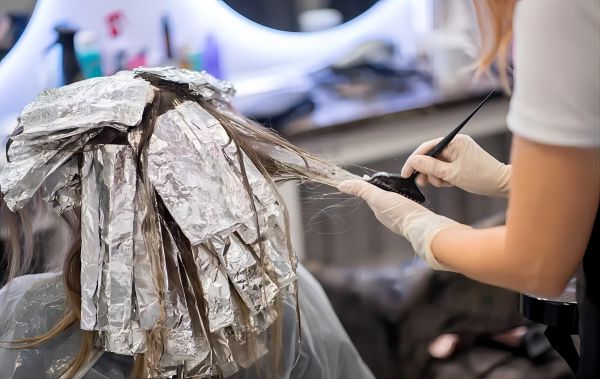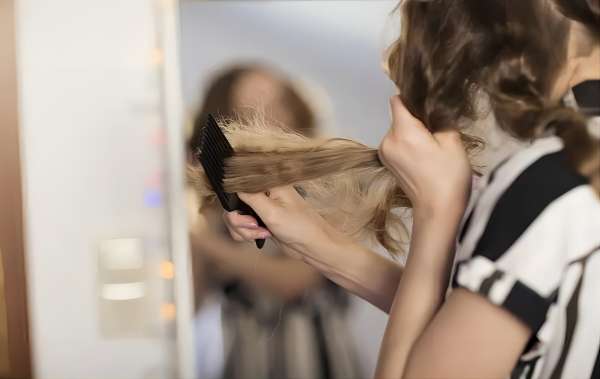We all know how much we love our styling tools, whether it's the flat iron, curling wand, or blow dryer. But we also know that without the proper protection, our precious locks can turn from fab to drab pretty quickly. That’s why using a heat protectant is non-negotiable. But just spritzing it on isn't enough; you’ve got to make sure it's evenly spread. So, let's dive into how to get the most out of your heat protectant and keep your hair looking and feeling fabulous.
- Why Heat Protectant Is Essential for Healthy Hair
Heat styling tools like flat irons, curling wands, and blow dryers can reach temperatures that are incredibly damaging to the hair shaft. Without protection, the heat can strip your hair of moisture, leading to dryness, split ends, and breakage. A heat protectant creates a barrier between your hair and the heat, reducing the amount of damage your hair sustains. It locks in moisture and can even help to smooth the hair cuticle, making your hair look shinier and healthier. Understanding why you need a heat protectant is the first step in making sure you use it correctly.
- Types of Heat Protectants: Sprays, Creams, and Serums
Heat protectants come in various forms, and choosing the right one can depend on your hair type and styling needs.
Sprays:
Lightweight Formulation:
-Minimal Residue: Heat protectant sprays are typically lightweight and leave minimal residue, making them ideal for those who prefer a natural feel.
-Quick Absorption: They absorb quickly into the hair, providing immediate protection without any greasy or heavy feeling.
Suitable for Fine or Oily Hair:
- No Weigh-Down: Because they are light, sprays won't weigh down fine hair, which can easily become flat and lifeless.
- Oil Control: They are also good for oily hair, as they don’t add extra grease or shine, maintaining a balanced look.
Application Ease:
- Even Distribution: Sprays can be easily misted over large sections of hair, ensuring even coverage.
- Convenience: They are convenient and quick to apply, making them perfect for a fast-paced routine.
Creams:
Thicker Formulation:
- Moisture-Rich: Creams are generally thicker than sprays, providing a richer layer of protection and moisture.
- Deep Conditioning: They often contain nourishing ingredients that deeply condition the hair, improving its texture and health.
Ideal for Dry or Coarse Hair:
- Intensive Hydration: Creams are perfect for dry hair, as they offer intensive hydration that can help combat dryness and brittleness.
- Softening Effect: They can soften coarse hair, making it more manageable and easier to style.
Application Method:
- Manual Distribution: Creams require more effort to apply, as they need to be distributed manually through the hair with hands.
- Focus on Ends: They are particularly effective when applied to the ends of the hair, which are more prone to damage.
Serums:
Oil-Based Formulation:
- Glossy Finish: Serums are often oil-based, providing a glossy and polished finish to the hair.
- Sealing Moisture: They help to seal in moisture, preventing dryness and enhancing the hair’s natural shine.
Great for Thick or Curly Hair:
- Enhanced Definition: Serums can help define curls and reduce frizz, making them a great choice for curly hair types.
- Heavy-Duty Protection: They offer heavy-duty protection and are excellent for thick hair, which can handle more substantial products.
Application Technique:
- Controlled Application: Serums should be applied sparingly to avoid greasiness, typically using a small amount spread evenly through the hair.
- Focus on Problem Areas: They are best used on the mid-lengths to ends of the hair, where damage and dryness are most common.
- Step-by-Step Guide to Applying Heat Protectant
A. To ensure your heat protectant is evenly spread, start with clean, damp hair.
B. Divide your hair into manageable sections, typically top, middle, and bottom layers, and secure each with a clip.
C. Hold the spray bottle about six inches away from your hair and mist each section lightly. If you’re using a cream or serum, dispense a small amount into your hands, rub them together, and then run your fingers through your hair, focusing on the ends and mid-lengths.
D. Use a wide-tooth comb or a brush to distribute the product evenly from roots to tips.
E. Make sure every strand gets some attention, especially the ends, which are most prone to damage.
- Common Mistakes When Using Heat Protectants and How to Avoid Them
A common mistake is applying too much product, which can leave your hair feeling greasy and weighed down. Remember, less is more. Another mistake is not distributing the product evenly, which can lead to uneven protection and damage. Always section your hair and comb through after application. Additionally, some people forget to apply heat protectants to certain areas, like the back of the head or the lower layers, which can result in these areas getting more damaged over time. Ensure you cover all parts of your hair, and don’t rush the process.
- Tools and Accessories to Help Evenly Distribute Heat Protectant
Using the right tools can make a big difference in how well your heat protectant is distributed. A wide-tooth comb or a detangling brush is perfect for combing through your hair after applying the product, ensuring even distribution. Spray bottles with a fine mist setting can help apply the product more evenly. For creams and serums, using your fingers to distribute the product can be very effective. Clips and hair ties are essential for sectioning your hair. Investing in good-quality tools can make the application process smoother and more effective, leading to better protection for your hair.
- How Much Heat Protectant Should You Use? Finding the Right Amount
Using the right amount of heat protectant is essential. Too little, and you risk not protecting your hair adequately; too much, and your hair can become greasy and weighed down. For sprays, a light mist over each section is usually sufficient. For creams and serums, start with a dime-sized amount, rub it between your hands, and apply it through your hair, focusing on the ends and mid-lengths. You can always add a bit more if needed, but starting with a small amount helps you avoid overloading your hair. The right amount can vary depending on your hair length and thickness, so adjust accordingly.
- Top Heat Protectant Ingredients to Look For
When choosing a heat protectant, look for ingredients that provide the best protection and care for your hair. Silicones like dimethicone and cyclomethicone form a protective barrier around the hair shaft, reducing damage from heat. Natural oils like argan oil, coconut oil, and jojoba oil not only protect your hair but also add moisture and shine. Hydrolyzed proteins can strengthen the hair and make it more resilient to heat. Avoid products with alcohol as a main ingredient, as it can dry out your hair. Knowing which ingredients to look for can help you choose a product that offers the best protection and keeps your hair healthy and shiny.





